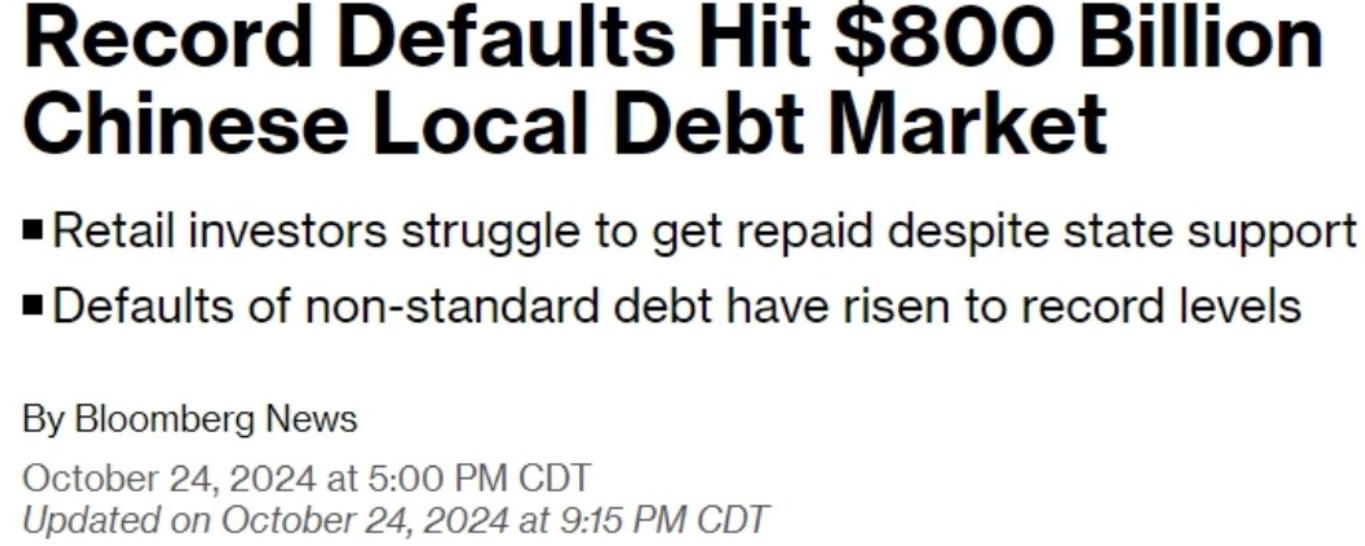
China is currently facing a staggering $800 billion in defaults in its non-standard debt market. Much of this debt is tied to Local Government Financing Vehicles (LGFVs), which issue fixed-income investments that aren’t publicly traded and are primarily used to fund infrastructure projects. Analysts estimate the size of this non-standard debt market to be massive, and recent data shows an alarming increase in defaults.
In just the first nine months of 2024, 60 non-standard debt products tied to LGFVs have either defaulted or flagged repayment risks—up 20% compared to the same period last year. This surge has set a record for defaults in this debt sector, revealing deep cracks in the foundation of China’s financial system and posing significant risks for the overall economy.
The impact on retail investors has been severe, as many believed these investments were implicitly backed by the state. With defaults piling up, stories of financial loss have multiplied, including that of Ms. Lulu Fang, who lost her life savings due to such defaults. The crisis is spreading financial insecurity among citizens who previously trusted the system.
On the banking front, Chinese institutions are now struggling with liquidity pressures. Yields on one-year Negotiable Certificates of Deposit (NCDs) have risen sharply, marking the highest levels since June. Rising yields are making it more expensive for banks to borrow, straining their operations.
Banks are also seeing a drop in their deposit base, partly due to a stock market rally that’s redirecting investor funds. Additionally, the slowdown in China’s economic growth has heightened the risk of non-performing loans as businesses and individuals face difficulty meeting loan payments. Recent government regulatory crackdowns, targeting risky and opaque banking practices, have further tightened the financial landscape, leaving banks under mounting strain amid China’s deepening debt crisis.
Sources:
-
Yahoo Finance – Record Defaults Hit $800 Billion Chinese Local Debt Market
-
The Asia Live – Record Defaults in China’s Local Debt Market
-
The Edge Singapore – Record Defaults Hit $800 Billion Chinese Local Debt Market
- S&P Global – Chinese Banks Diverge in Building Liquidity Cushion
- Sia Partners – Liquidity Risk Challenges Faced by Chinese Banks
- S&P Global – Chinese Banks Improve Liquidity Buffers as Deposits Grow
Told you… 2 days ago………… 🥲🤷🏻♂️👇🏻 https://t.co/LTvFEolyXu pic.twitter.com/dSm39D1aBf
— JustDario 🏊♂️ (@DarioCpx) October 25, 2024
Xi’s Stimulus Package Met With Wall of Skepticism in Washington
(Bloomberg) President Xi Jinping’s boldest economic stimulus since the pandemic failed to impress global luminaries gathered in Washington this week, who called for more measures to rebalance China’s growth and…
— Tracy Shuchart (𝒞𝒽𝒾 ) (@chigrl) October 25, 2024